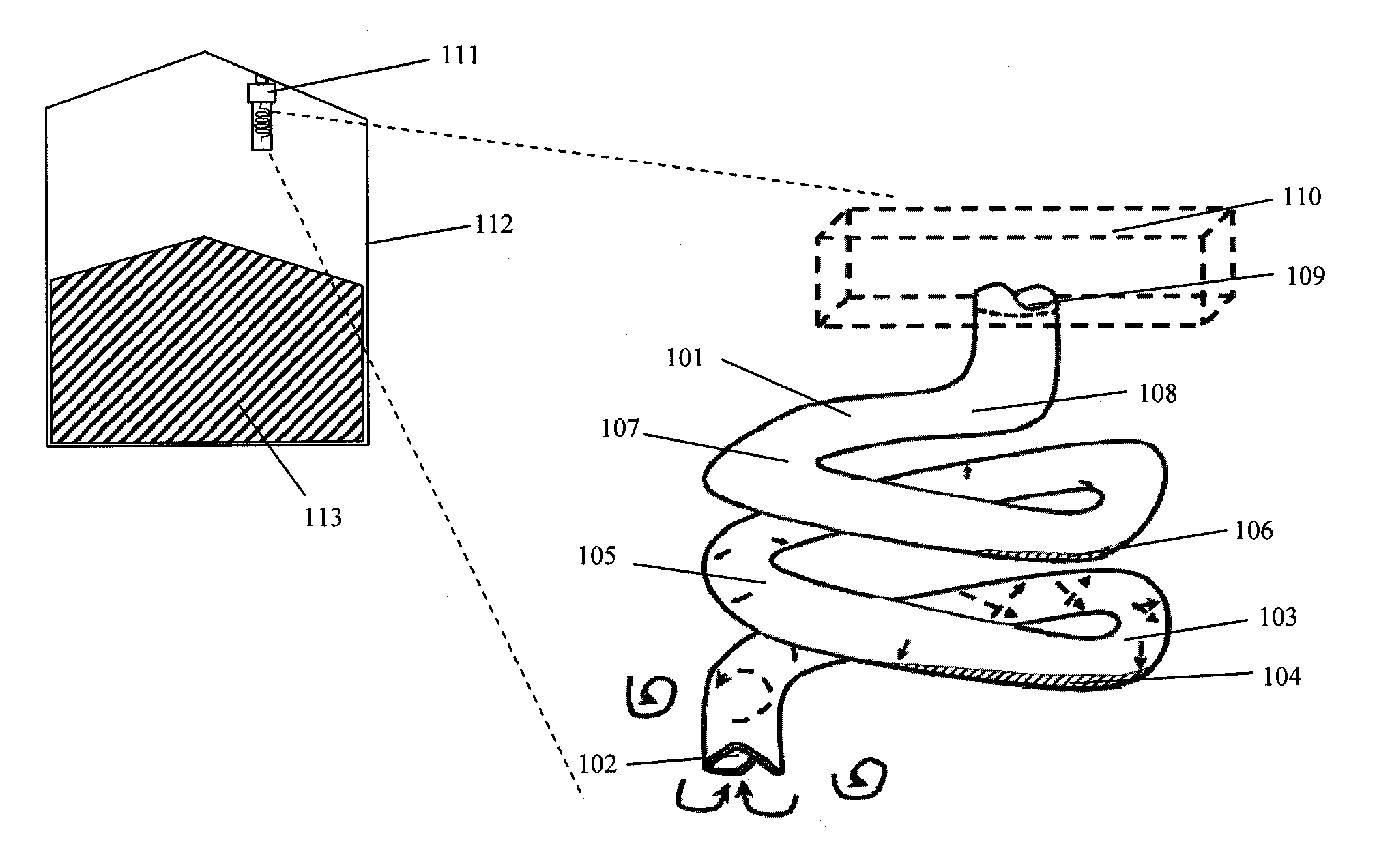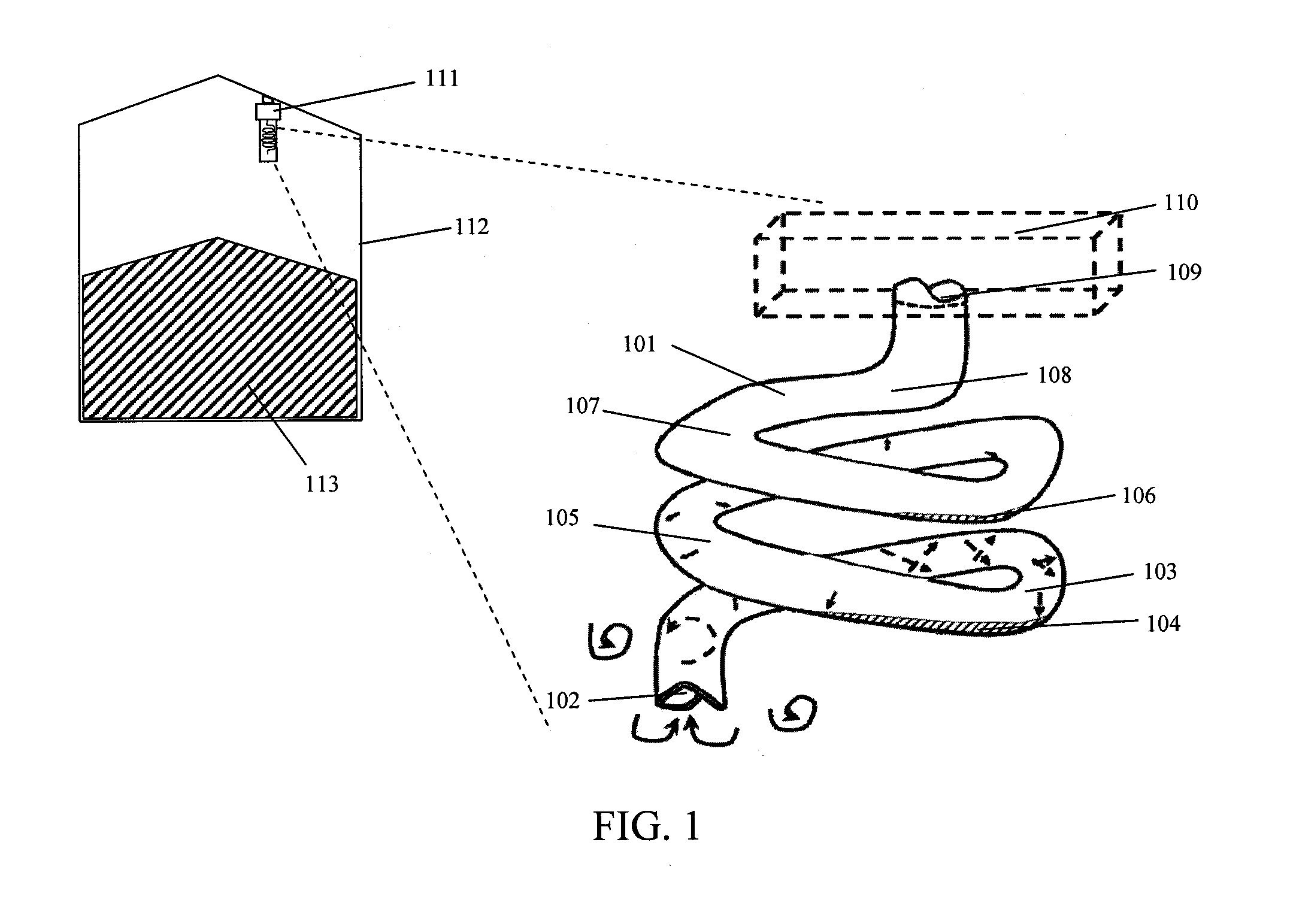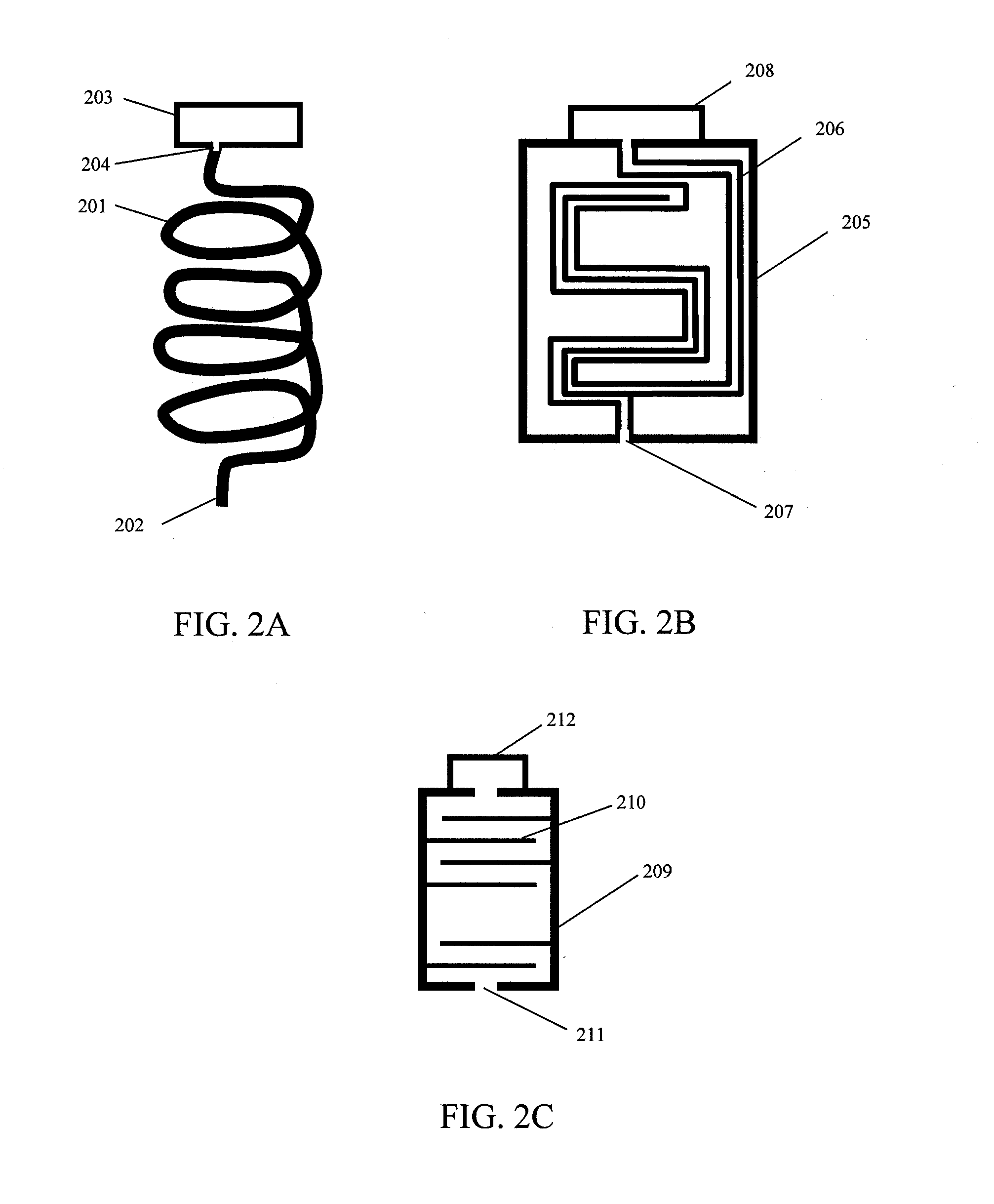Bulk grain storage spoilage detection apparatus
a detection apparatus and grain storage technology, applied in fire alarms, instruments, chemical methods analysis, etc., can solve the problems of dust buildup and gas flow, maintenance intervals approaching the operating life of the sensor itself, and insufficient barrier membranes or filters, so as to reduce personnel safety hazards and increase the overall workforce. the effect of safety
- Summary
- Abstract
- Description
- Claims
- Application Information
AI Technical Summary
Benefits of technology
Problems solved by technology
Method used
Image
Examples
Embodiment Construction
[0028]The present disclosure recognizes that in dust-laden grain bin environments, air sampling is complicated by the necessity to remove airborne particulates from sampled air to avoid problems associated with particulate build-up on or clogging of sensor components. Particulate build-up, or fouling, decreases measurement sensitivity or may completely block the air path to the sensor, skew sensor calibration, reduce sensor life, decrease the maintenance interval and ultimately increase the overall cost of ownership.
[0029]Filtering schemes may be used to separate entrained particles from sample air by the use of barrier membranes or electrostatic grids with porosity appropriate for the size of particles that must be blocked. Barrier filtering, however, is often inappropriate for permanently installed gas detectors due to fouling and blocking. The use of filters may reduce the problems associated with particulate fouling, but does not eliminate the cost and downtime related to filter...
PUM
 Login to View More
Login to View More Abstract
Description
Claims
Application Information
 Login to View More
Login to View More - R&D
- Intellectual Property
- Life Sciences
- Materials
- Tech Scout
- Unparalleled Data Quality
- Higher Quality Content
- 60% Fewer Hallucinations
Browse by: Latest US Patents, China's latest patents, Technical Efficacy Thesaurus, Application Domain, Technology Topic, Popular Technical Reports.
© 2025 PatSnap. All rights reserved.Legal|Privacy policy|Modern Slavery Act Transparency Statement|Sitemap|About US| Contact US: help@patsnap.com



